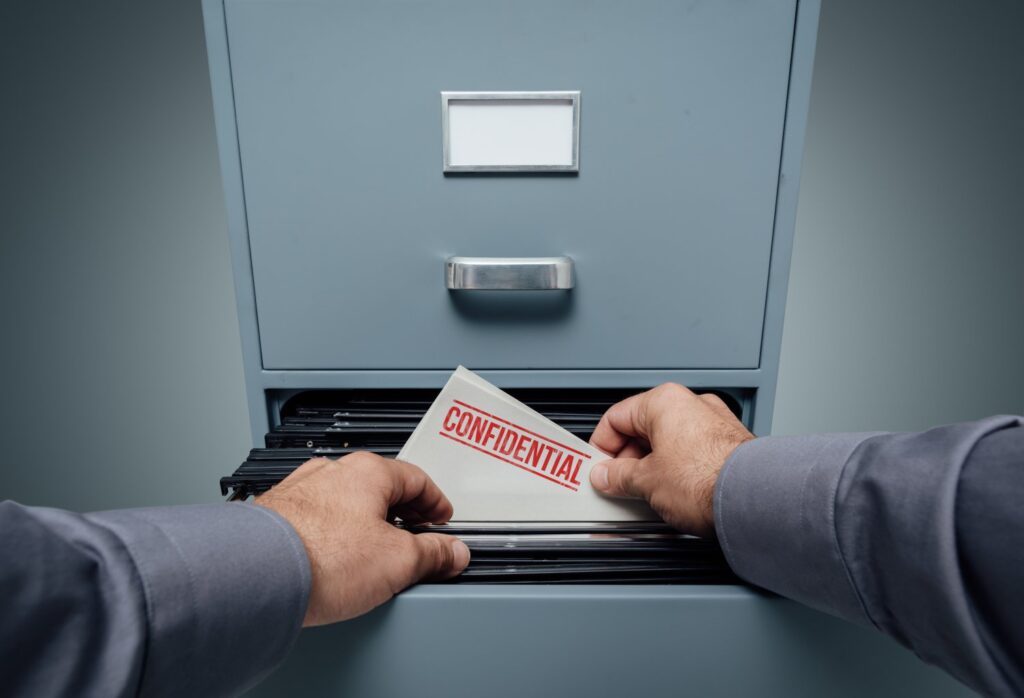Transcripts are pivotal in shaping students’ academic and professional paths. But are there rules to high school transcript confidentiality?
This article delves into high school transcript confidentiality. By striking a balance between transparency and privacy, we can safeguard student data while optimizing the benefits of educational record sharing.

Protection Of High School Transcripts
Protecting high school transcripts from unauthorized access is a critical concern in maintaining student privacy. Educational institutions typically implement measures to safeguard these records, but the level of protection may vary.
Factors such as the school’s security protocols, data storage methods, and adherence to privacy regulations can impact the overall effectiveness of safeguarding transcripts.
Additionally, technological advancements and potential vulnerabilities in digital systems pose challenges to maintaining adequate protection. To ensure the confidentiality of high school transcripts, schools need to implement robust security measures, regularly update their systems, and adhere to relevant privacy laws and regulations.
Who Can Access Students’ Transcripts?
Access to a student’s high school transcript is typically limited to authorized individuals. Or entities with a legitimate educational or legal interest.
These include educational institutions, potential employers, scholarship committees, and certain government agencies. Transcript confidentiality is paramount, as access to such records is granted only to those who require the information for legitimate purposes.
Educational institutions must adhere to privacy laws and policies that govern the release and handling of student records, including high school transcripts.
Striking the right balance between providing necessary access and upholding transcript confidentiality is essential to protect students’ privacy rights.
Measures Schools Can Deploy
Schools and educational institutions employ various measures to protect the privacy of student records, including high school transcripts. Some common measures include:
- Access Control. Implementing strict access controls and authentication protocols ensures that only authorized personnel can access student records. This may involve assigning unique login credentials, utilizing secure authentication methods, and maintaining access audit logs.
- Data Encryption. Encrypting student records, including high school transcripts, both during storage and transmission. Encryption ensures that the data remains unreadable even if unauthorized access occurs without the decryption key.
- Physical Security. Employing physical security measures to protect physical copies of student records, such as storing them in locked cabinets or secure areas with restricted access.
- Employee Training. Providing comprehensive training to staff members regarding student record privacy and confidentiality. This includes educating employees on their legal obligations, best practices for handling sensitive information, and potential risks associated with data breaches.
- Data Retention Policies. Establishing clear and secure data retention policies that outline how long student records, including high school transcripts, are retained and the procedures for securely disposing of them when no longer needed.
- Compliance with Privacy Regulations. Ensuring compliance with applicable privacy laws and regulations, such as the Family Educational Rights and Privacy Act (FERPA) in the United States. This includes obtaining consent and permission before disclosing student records to third parties.
Sharing Academic Records
Sharing academic records, including high school transcripts, can have risks and benefits. Let’s explore them:
Benefits
- College Admissions and Scholarships. Sharing academic records can give colleges and scholarship committees valuable information to assess a student’s academic abilities, achievements, and potential. It helps them make informed decisions in the selection process and award scholarships based on merit.
- Employment Opportunities. Potential employers often request academic records to evaluate candidates’ qualifications, skills, and performance. Academic achievements showcased through transcripts can demonstrate a candidate’s dedication, discipline, and suitability for certain roles.
- Educational Planning and Support. Sharing academic records allows educators to gain insights into students’ strengths, weaknesses, and progress. This information enables personalized educational planning, targeted support, and interventions to help students reach their full potential.
- Research and Statistical Analysis. Aggregated and anonymized academic records can contribute to educational research and statistical analysis. Such data can provide valuable insights into trends, curriculum effectiveness, and educational policies, ultimately leading to improvements in the education system.
Risks
- Privacy Breaches. One of the primary risks is the potential for privacy breaches. Unauthorized access to academic records can lead to the disclosure of sensitive personal information, which can be misused for identity theft, fraud, or other malicious activities.
- Discrimination and Bias. Sharing academic records can expose students to potential discrimination or bias based on their grades, test scores, or other performance indicators. This can impact their college admissions, scholarships, or employment opportunities, especially if judgments are made solely on academic performance without considering other factors.
- Reputation and Stigmatization. Negative or underwhelming academic records shared without proper context can unfairly stigmatize students, impacting their self-esteem, relationships, and future prospects.
It is essential to strike a balance between reaping the benefits of sharing academic records and safeguarding student privacy. Implementing robust privacy measures, providing the proper context for interpretation, and considering a holistic view of students’ capabilities can help mitigate the risks and ensure a fair and responsible use of academic records.
Final Thoughts
High school transcript confidentiality is a delicate balance between transparency and protecting students’ privacy. While risks of privacy breaches and discrimination exist, sharing academic records also offers benefits like aiding college admissions and personalized education planning.
Schools must implement robust privacy measures to safeguard transcript confidentiality, comply with regulations, and adapt to evolving technology.
By prioritizing student privacy and maintaining a trustworthy environment, we can balance transparency and protecting student data in the educational system.



